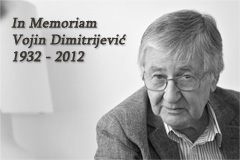Donor: UNDP
Duration of the project: June 2004 – June 2005
The process of the preparation of the Serbian HDR on multiculturalisam 2005 – Strenght of Diversity – started in June 2004. The work has been done by two institutions – the Economics Institute and the Belgrade Centre for Human Rights. The National Human Development Report for Serbia aimed at analyzing different aspects and dimensions of multiculturalism in Serbia. Its primary goal was to consider the social and economic status of national minorities in the territory of the Republic of Serbia, identify the particular problems they face and make a number of recommendations for equal participation of national minorities in the society.NHDR for Serbia covered different aspects of this issue:
- Geopolitical presentation and historical legacy of the multicultural society in Serbia and in a regional perspective, based on historical sources and previous research.
- Minority rights and human rights which enjoyment is of a great importance for minority groups: prohibition of discrimination, right to preserve their own culture, right to education in mother tongue and to have textbooks in their mother tongue, right to use own language before public authorities, right to maintain institutional relations with the home country, right to freedom of thought, conscience and religion, freedom of opinion and expression, freedom of peaceful assembly and association, participation of minorities in public, political, social and economical life, etc.
- Situation in Vojvodina (considering the multiethnic composition of this province), Sandžak (with emphasis on the status of Muslims) and the municipalities in southern Serbia (bearing in mind the predominance of the Albanian minority in that region).
- Roma ethnic community due to very poor indicators relating to the rate of unemployment, occupation, educational level and its poor position in the territory of the Republic of Serbia in general.
- Minorities’ participation in the grey economy, the size of which is estimated at 35-40% of BDP.
- Emphasis will be laid on the participation of Roma, Muslims and Albanians in the grey economy and the effects of that participation on their social and economic status in the country
- Recommendations on how to ensure equal participation of the most endangered minority groups in the country’s labour force and overall economic life.







